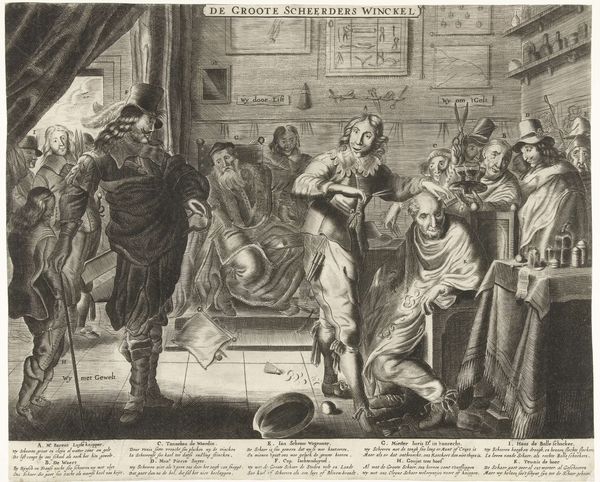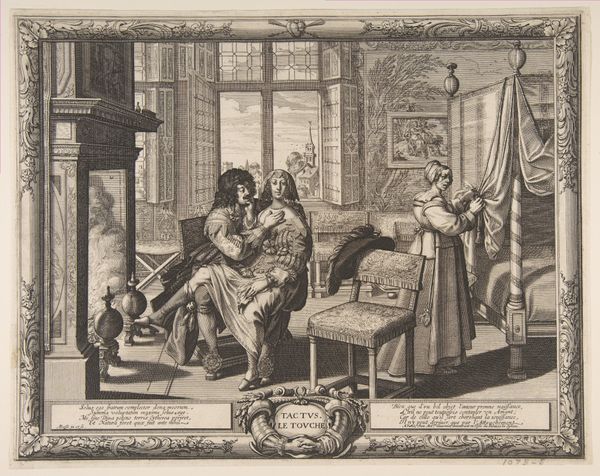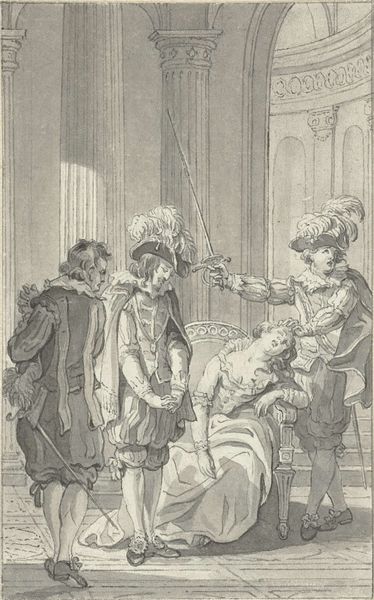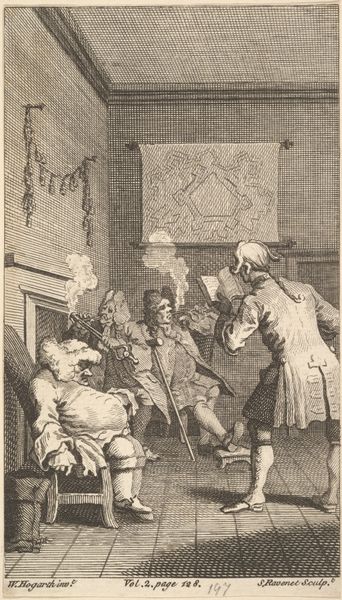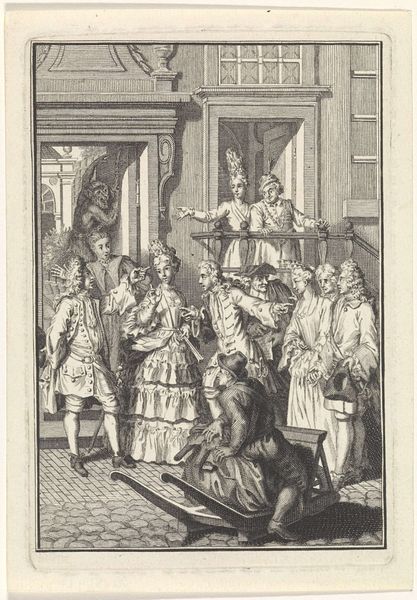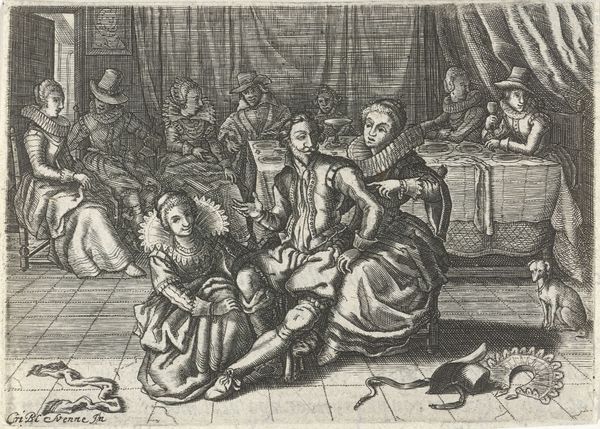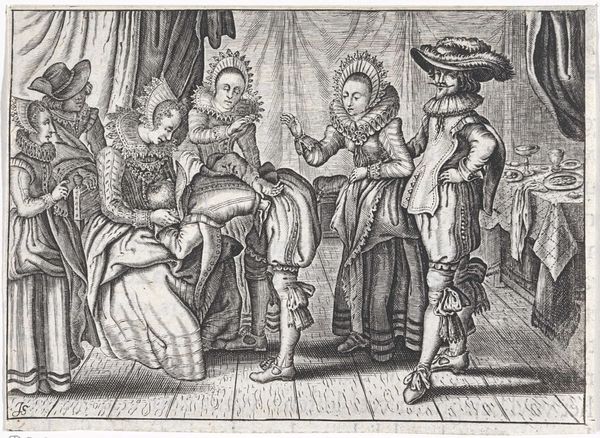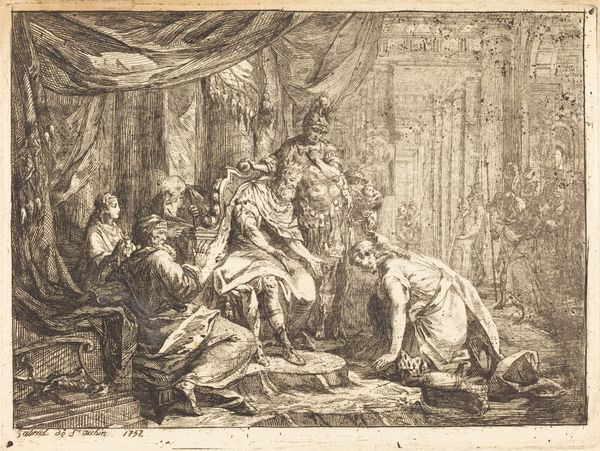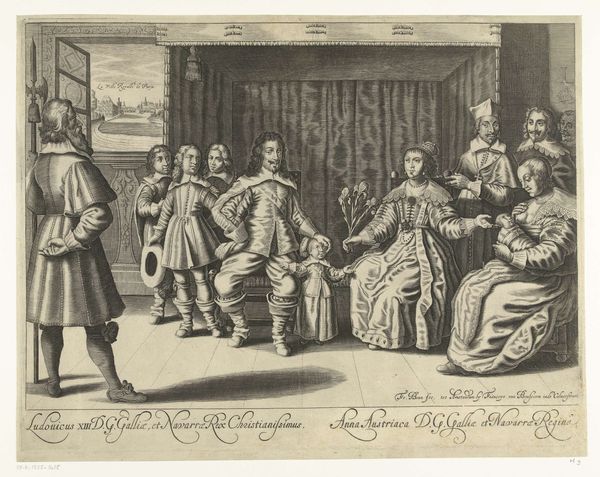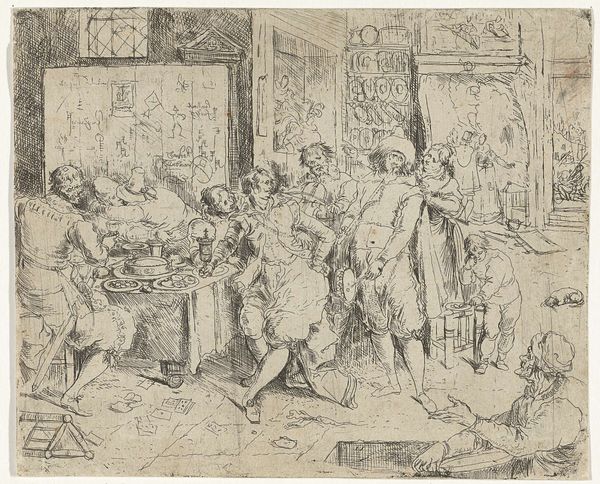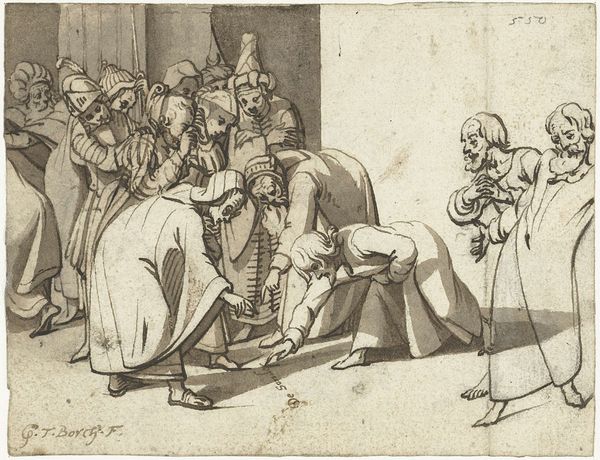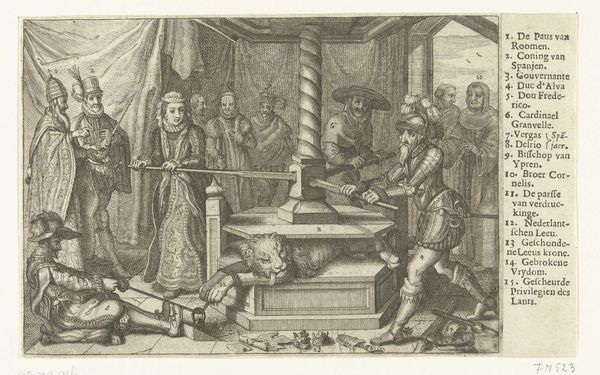
engraving
#
portrait
#
dutch-golden-age
#
genre-painting
#
history-painting
#
engraving
Dimensions: height 102 mm, width 134 mm
Copyright: Rijks Museum: Open Domain
Curator: Welcome. We are looking at "Painter and Female Model in the Studio," an engraving made between 1625 and 1635, attributed to an anonymous artist of the Dutch Golden Age and currently held in the Rijksmuseum. Editor: Wow, immediately I’m struck by this theatrical setup—it feels like stepping into a stage play, everyone so deliberately positioned. So baroque, it’s like a meticulously constructed dollhouse tableau. Curator: Yes, the scene certainly presents a self-conscious staging. This work exists within the conventions of genre painting in the context of the rise of history painting as a popular theme at the time. It reveals interesting social dynamics concerning the artist, his models, and patronage during this era. Editor: I’m loving the almost caricatured figures—particularly that central painter. The self-awareness practically drips off his ruffled collar and inflated breeches! And look at the little dogs bustling about! Pure charm. It's like a sly wink acknowledging its own artifice. Curator: Absolutely, such details showcase the prosperity and social display that became so strongly embedded within Dutch Golden Age society and imagery. It tells of status, wealth, and class distinctions. Notice, too, the interior space. The studio contains the artistic process itself as a display object. Editor: Absolutely. Art about art—or meta-art, centuries before we had that phrase. And do you sense that slightly detached, even haughty gaze of the model? She appears powerful and rather unimpressed—which throws some engaging shadows on that whole male gaze dynamic we so casually ascribe to art history! Curator: Precisely. These considerations about who is performing, for whom, and the negotiations for image construction allow insight into how gender, labor, and art were publicly understood during that time. Editor: Such a wonderful peek into another era! Seeing through both social critique, the personal narrative within this little piece continues to resonate—a reflection on ambition, artifice, and those timeless quirks that render the old masters so beautifully and undeniably human. Curator: Indeed, examining this engraving provides a critical lens into both the representation of artistic practices and social structures of the 17th century, sparking a dialogue on class and creation that still feels strikingly current.
Comments
No comments
Be the first to comment and join the conversation on the ultimate creative platform.
